By Theodore W. Scull.
Before a much more recent Russia river cruising stint, I had traveled to Russia for the first time during the Soviet Union era that ended in 1991. It had been a closely orchestrated experience overseen by Intourist, the official state travel agency. My four-week visit back then was part guided tour and part independent stays drawn from a list of accessible cities. In my case they were Yalta and extra days in St. Petersburg (then Leningrad) and Moscow. Travel within Russia was by train, airplane, local bus, and a side-wheel riverboat on the Volga and Don rivers.
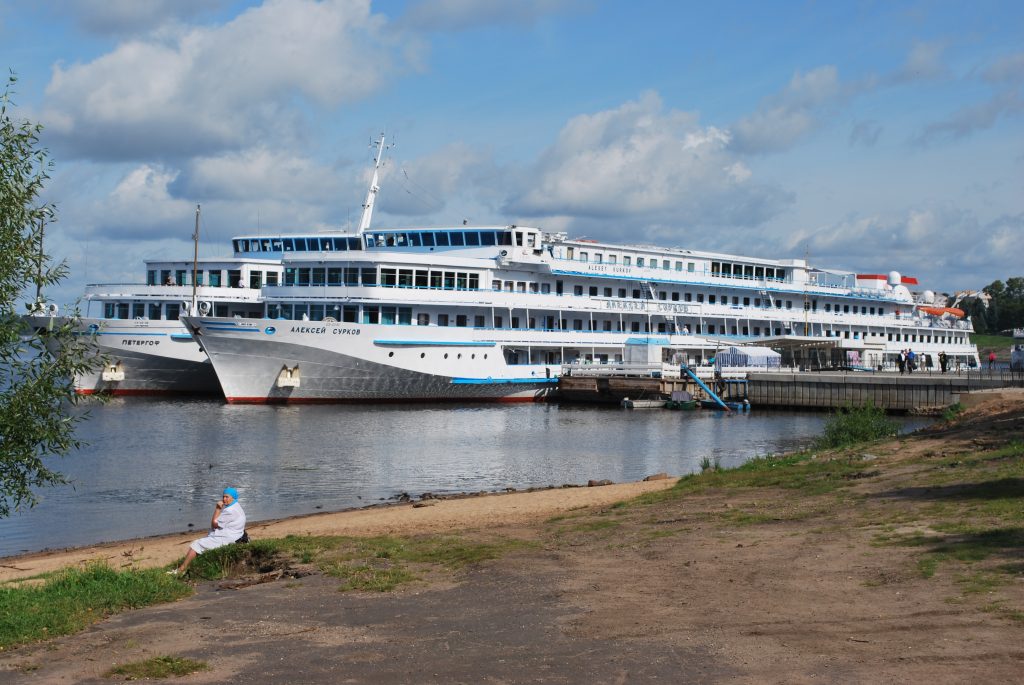
The absence of low bridges permits much larger riverboats than in Western Europe * Photo: Ted Scull
While my wife and I had taken two Baltic cruises that called at St. Petersburg, I longed to press on inland to see what the country was like today. For my wife, it would be an all-new experience.
I looked at tours but did not want one that hopped by air from city to city as I was equally interested in what was in between. I wanted to see Mother Russia, the national personification of that country and not unlike the term Fatherland that applies to many other countries.
Recently, relations between the U.S. and Russia have slipped back to a variation of the Cold War days, but that was not a deterrent for us. Russia is hardly the only country where we are not on best terms.
Russia River Cruising with Viking River Cruise
A half dozen years ago, we chose Viking River Cruises’ 13-day Waterways of the Tsars that plied between St. Petersburg and Moscow using a complex of connecting rivers, canals, lakes and a reservoir. Viking has a long track record operating in Russia that dates back 20 years.
The riverboat would serve as our hotel for three nights in both cities and then convey us through the countryside making a half-dozen stops along the way.
We arrived in St. Petersburg by Russian train from Helsinki, Finland, a most comfortable daytime journey passing through deep forests and farmland. It was the way that V. I. Lenin had arrived in 1917 just prior to the Russian Revolution.
Several Days in St. Petersburg
As we exited St. Petersburg’s Finland Station, the locomotive that had brought Lenin from Helsinki to Russia to stage the 1917 revolution was on display at the end of the platform. After a 30-minute taxi ride to the Neva River, we boarded a riverboat considerably larger than those on the Danube, Rhine, Rhone and other Western European rivers, because of the absence of low bridges.
Transfer by car service took 30 min.
For a description of the riverboat, see our QuirkyCruise Viking River Cruises review.
With the first three days docked on the Neva, we used the riverboat as our hotel. On the first morning, the bus you entered and the guide assigned to that bus were yours for the entire tour program. Tatiana, our guide, was a highly informative woman with an engaging personality. During the academic year, she taught English and French at university level.
Tours leaving from the dock visited the stupendous Hermitage and Winter Palace, Peter and Paul Fortress where the czars and czarinas are buried, and Catherine’s Palace and gardens at Pushkin.
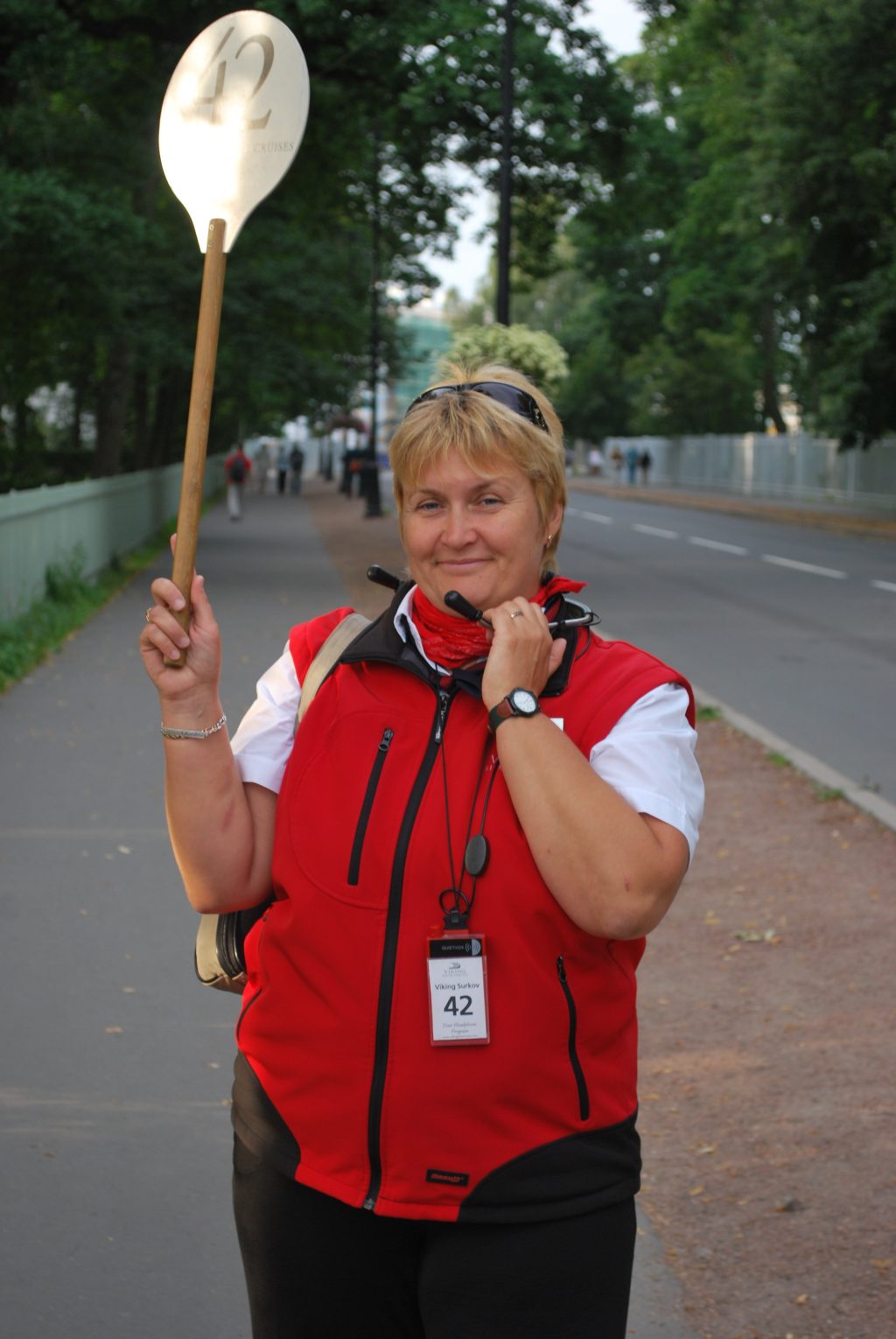
Tatania, our guide, throughout the rver cruise.
Also, we arrived at most sites at the start of the day, and while that meant an early rise, we faced much less crowding and enjoyed our visits. As a bonus, we had free time to wander amongst one of the world’s finest art collections. One evening we attended a delightful performance of Swan Lake.
Our guide also carefully explained how to use the subway and bus in St. Petersburg and later at Moscow. On those days when the included tours did not operate, passengers had the choice of paying for optional tours or going on their own. We chose the latter as I can read Cyrillic letters learned from a one-year Russian language course in college. However, few others did.
As Russia uses a broad rail gauge, trains were especially roomy as were the stations. It was a half hour to the city center at Nevsky Prospekt (the main boulevard) and there we toured on foot using our Lonely Planet guidebook.
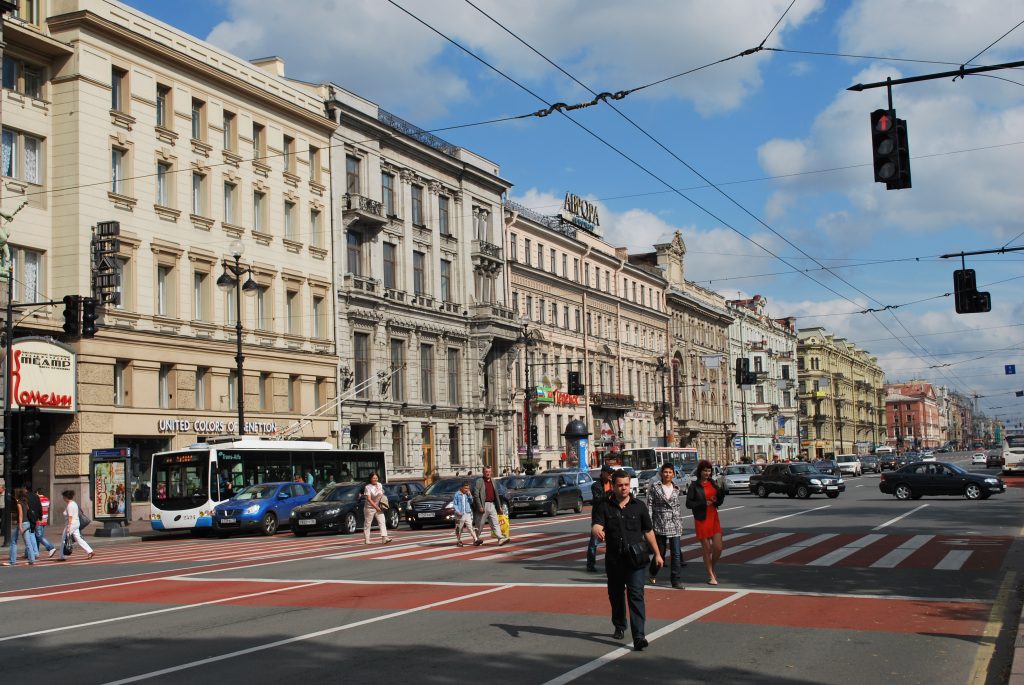
St. Petersburg’s Nevsky Prospekt, main shopping street. * Photo: Ted Scull
St. Petersburg, a planned city with its center dating from the early 18th to the early 20th century, was a delight to explore. It is laced with fine avenues and tree-lined canals and dotted with charming neighborhoods and well-tended parks. We especially enjoyed the richly decorated interior of Kazan (Russian Orthodox) Cathedral and the main bookstore beautifully housed in the ornate former Singer (Sewing Machine) Building.
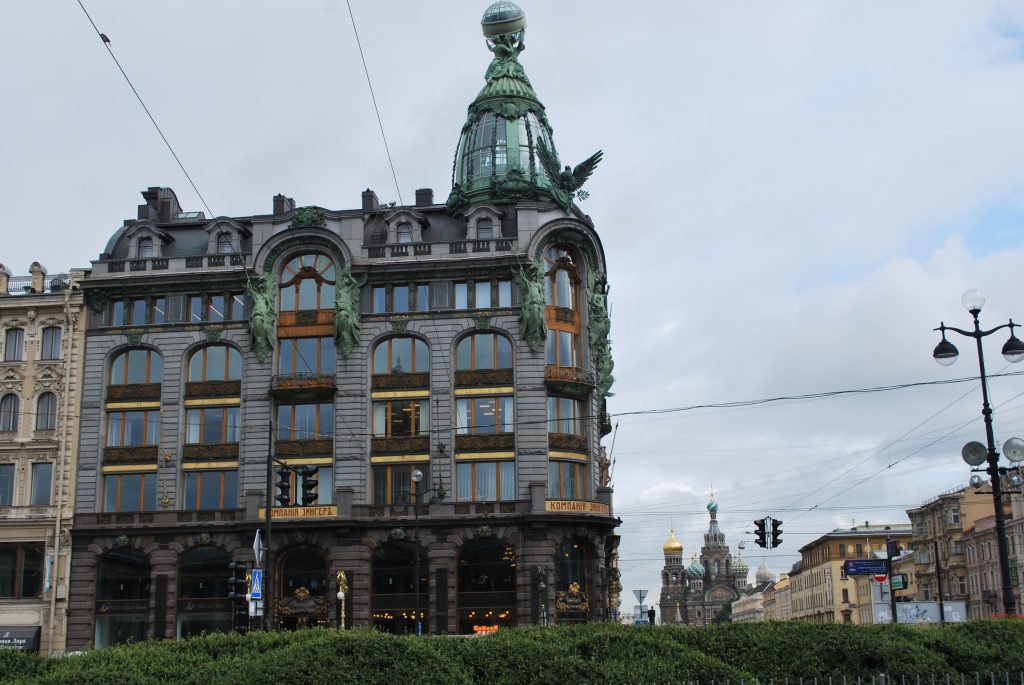
The former Singer Sewing Machine building, now a bookstore in St. Petersburg. * Photo: Ted Scull
The current Waterway of the Tsars Viking River Cruise itinerary, operating from June to October, covers some 870 miles, while as the crow flies, the straight-line distance is just 400 miles. In the 18th century, Peter the Great tried to link St. Petersburg, his new “Window on the West,” with Moscow by water, but the technology was simply not there. By the mid-19th century, a continuous waterway opened eventually joining the Baltic Sea, St. Petersburg and Moscow and via the Volga and Don Rivers to the Caspian Sea, Sea of Azov and Black Sea.
In the 20th century larger vessels demanded deeper and wider canals, and Joseph Stalin, employing huge gangs of slave labor, completely transformed the water route to what we see today, though some sections were not finished until the 1960s. The monumental architecture at the canal locks unmistakably reflects the Stalin era.
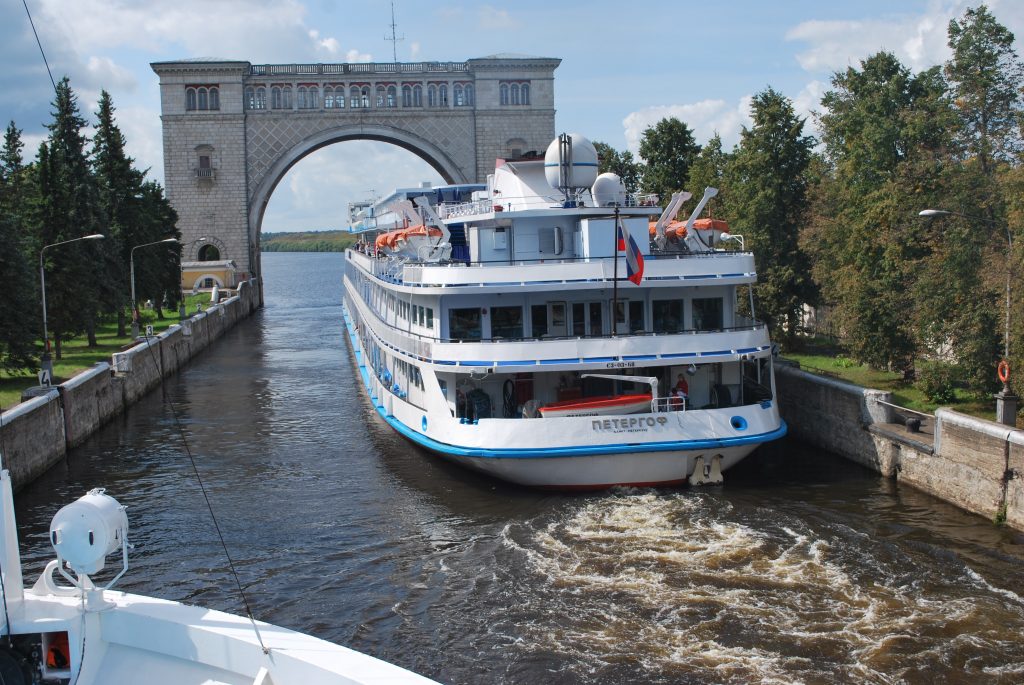
Stailin-era canal and lock construction. * Photo: Ted Scull
Through Lakes Ladoga & Onega
Slipping the lines, we sailed up the Neva River into Lake Ladoga, the largest in Europe, for a happily smooth crossing of the southern end and into the Svir River leading to Lake Onega, Europe’s second largest freshwater body, again almost a millpond.
Mandrogy
The stop at Mandrogy, a replica village built on the site of one destroyed during WWII offered craft demonstrations and souvenir shops and little else. The following stop at the Kizhi Island village, a UNESCO World Heritage site, presented a wonderful open-air museum of indigenous wooden architecture exhibiting small and large churches, with an octagonal plan, an elaborate bell tower or one with 22 onion domes and varying styles of private homes from the prosperous to peasant. While it seemed a stage set, the collection was authentic.
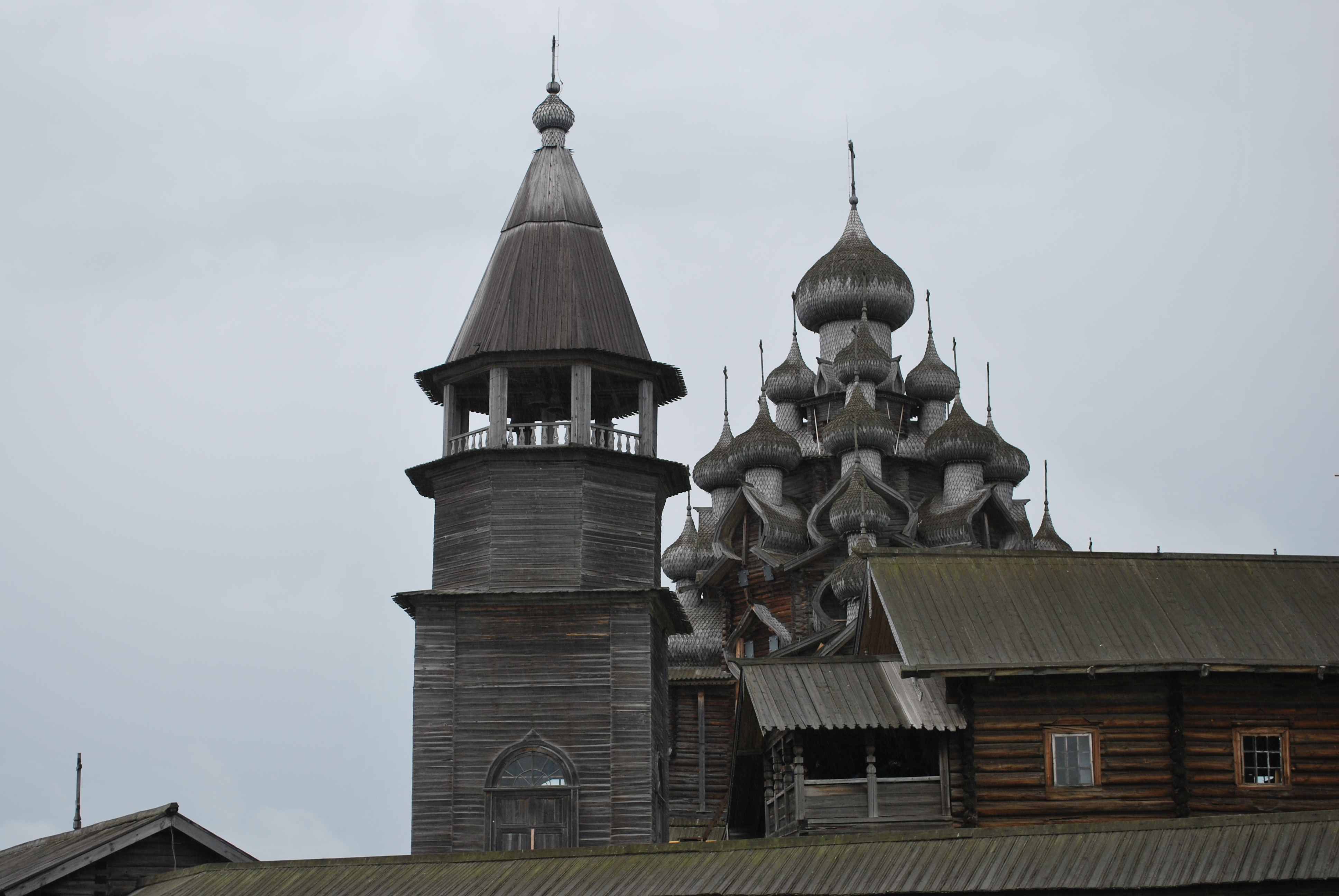
One of the historic wooden churches (22 domes) on Kizhi Island. * Photo: Ted Scull
Volga-Baltic Canal & Its Locks
The boat then cruised south through wind-whipped waters to join connecting rivers forming the Volga-Baltic Canal that led across circular White Lake and eventually into Rybinsk Reservoir. We passed through a series of impressive Soviet-era locks that could handle two large riverboats at once, each raising the vessel 45 to 50 feet. En route we also encountered quite a lot of freight traffic — small tankers, bulk carriers (transporting coal, grain, gravel, lumber) and container ships.
Goritsky
From the river landing at Goritsky, it was a short ride to the Monastery of St. Cyril, founded in 1397 and eventually becoming Russia’s second most important ecclesiastical, cultural and political center. Assumption Cathedral, the oldest building on the site, dates from 1497, and the impressive mile-long walls and 23 defense towers were completed in 1666.
At its height, the 30-acre monastery and its 11 churches owned 400 villages and 22,000 serfs. With their emancipation in 1861, the place fell into poverty, the complex closed down, and five decades ago it became a museum including an outstanding collection of religious icons.
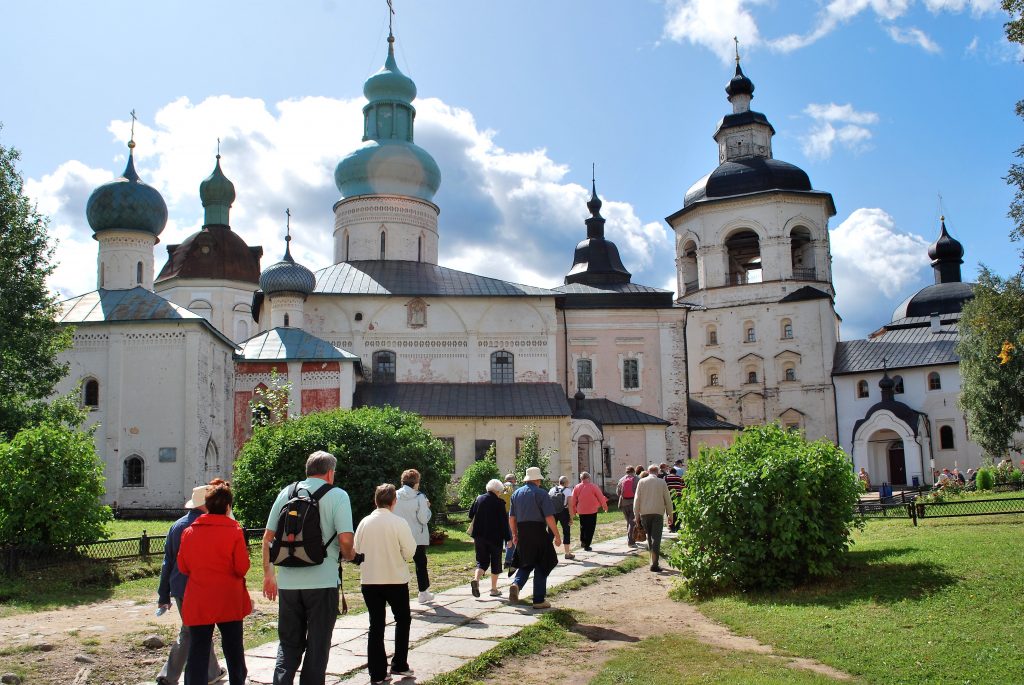
Monastery of St. Cyril. * Photo: Ted Scull
Back on the river, the evening could not have been prettier, with colorfully painted wooden houses clustered in small villages lining the wooded riverbanks — this pastoral scenery, a perk of Russia river cruising. People did watch us pass from shore, but it is not customary for them to wave.
Volga River
In the morning, we entered the legendary 2,300-mile-long Volga River, the mighty Mississippi of Russia that flows south into the Caspian Sea forming one route followed by early trading merchants between northern Russia and Asian kingdoms.
Yaroslav
The day’s stop was Yaroslav, a mid-sized city older than Moscow that is celebrated its millennium in 2010. We mingled with the locals at the street produce market, visited a 17th church with icons and frescos covering every inch from floor to ceiling, and promenaded through a pretty wooded park high above the river. It was a weekend and lots of families were out for a stroll. If I made eye contact and said a greeting, I usually received a reply, but none were initiated by the locals unless they had something to sell. Occasionally, in a market, I would ask another shopper what something was — both in English and Russian — and sometimes that prompted a response and a halting conversation might ensue. It’s worth trying to make a personal link with the residents.
Uglich
The last call before Moscow was Uglich, which once boasted 100 churches, and is now was a sleepy town with a delicate panorama of pretty red, blue and gold domes of the remaining churches lining the riverfront. We walked past rows of wooden houses to the edge of town, some attractively maintained with decorative wood trim and others in poor states of repair, reflective of the uneven wealth in the new Russia.
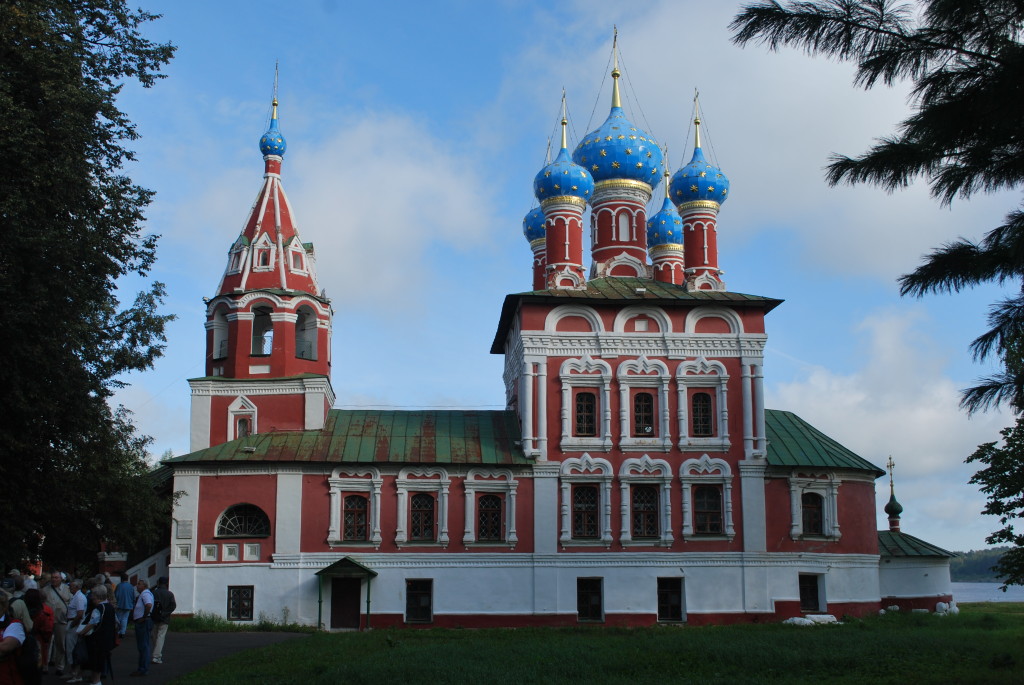
Uglich once boasted 100 churches, and is now was a sleepy town with a delicate panorama of pretty red, blue and gold domes of the remaining churches lining the riverfront. * Photo: Ted Scull
Moscow
The approach to Moscow was along the Moscow Canal, a prestige project that Stalin oversaw. Construction cost more than 100,000 lives, and following its rapid completion in 1937, the supervisors were also killed so not to reveal the appalling working and living conditions.
We docked among numerous other riverboats in the shadow of a huge Stalin-era maritime station on the outskirts of Moscow, the sprouting skyline seen about 15 miles away.
With my last visit during the Soviet era now decades ago, I was not prepared for how vibrant Moscow has turned out to be. Yes, vast Red Square, St Basil’s colorful onion domes and the Kremlin walls, churches and museums were much the same spectacles, but now everything in the heart of the city had experienced a face lift. The streets were always clean, but today the parks and flower beds were very well attended, and the shops had lots to sell, with GUM, the former department store, the most poignant proof. Once little had been on display and now it was packed with trendy designer shops, though during the present economy, with many more lookers than buyers in evidence.
The traffic, almost non-existent a quarter century ago, was truly maniacal all day long, and one was never sure how long it would take to get from one place to the next.
On our free day, my wife and I used the metro, accessed just inland from the Northern River Station, and marveled at its convenience. Trains arrived every one to two minutes and the stations ranged from chandeliered palaces to Art Moderne to heavy Soviet style with heroic bas-reliefs. Sometimes it was fun just to get off, have a look around and get on the next train.
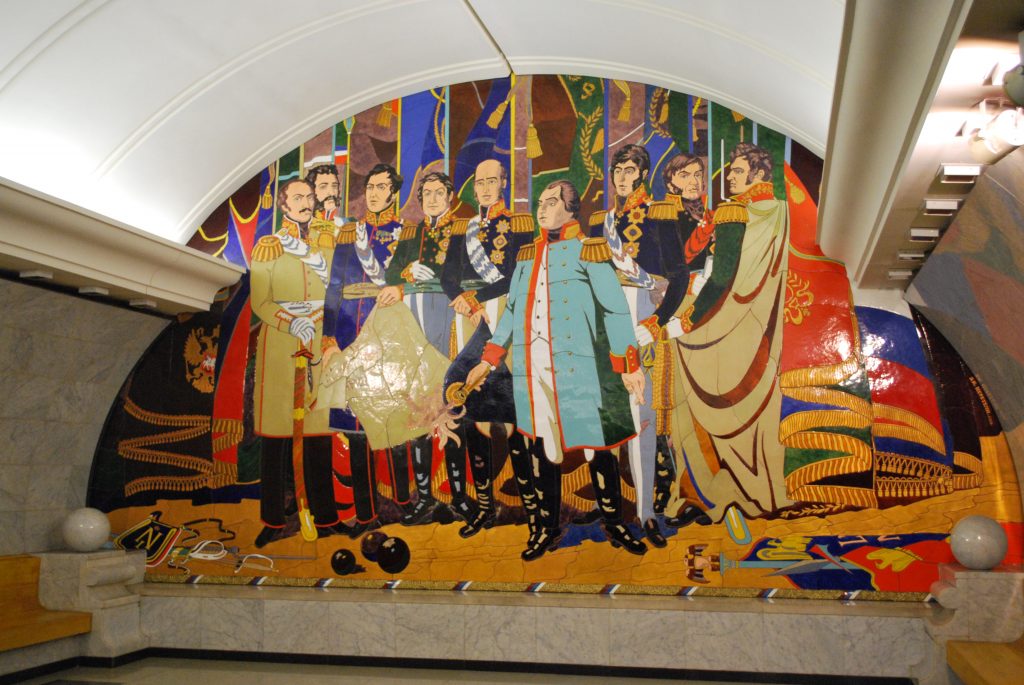
A mural in the Moscow subway. * Photo: Ted Scull
We toured some of the better inner-city neighborhoods with lovely small parks, narrow lanes, and attractive architecture and had lunch in a small café that could have been in Paris.
Three days was not enough for Moscow, and we envied those who were staying on. I revisited the National Hotel where I roomed all those years ago, and apart from the layout, its dowdy Intourist atmosphere had been completely transformed in a boutique beauty, with prices to match.
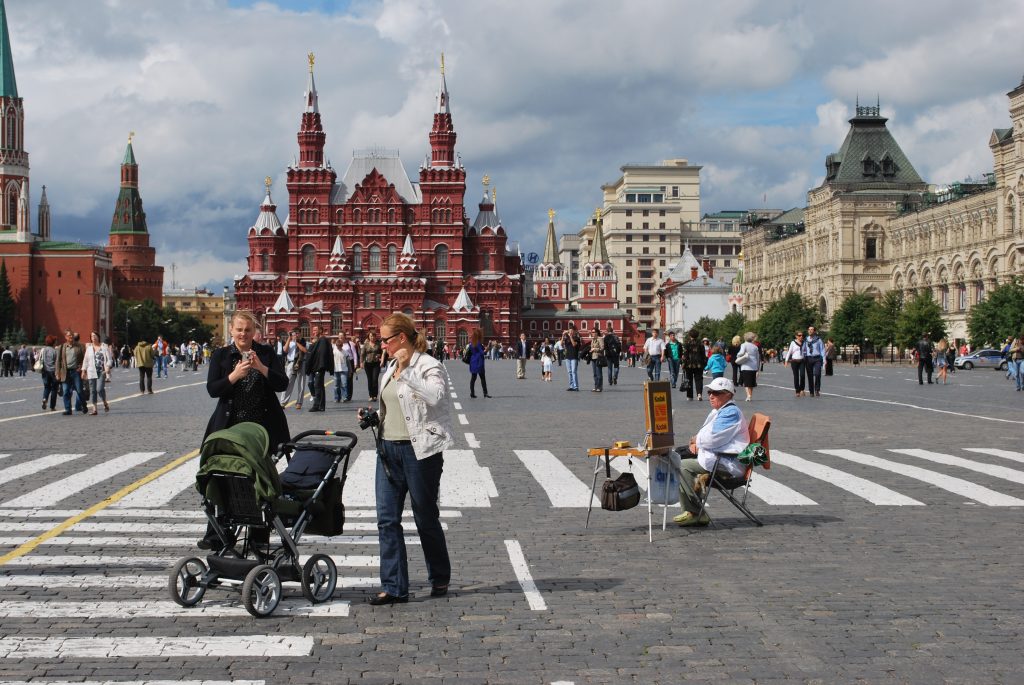
Moscow’s red Square is a major meeting place for locals and visitors. * Photo: Ted Scull
As Russia is a difficult country to travel through independently, a river cruise solves many of the hassles and hurdles. Staying aboard a riverboat in St. Petersburg and Moscow smooths out the packing and unpacking rotations, but the remote landings require long drives to and from the city centers.
Viking River Cruises’ Viking Surkov
The Viking Surkov riverboat (renamed Viking Helgi and upgraded) proved to be a fine, well-run conveyance, and the guides that traveled with the riverboat were uniformly excellent in their knowledge and presentation. Russia is a very complex country and difficult to fathom, so one cannot expect to be an expert on much after a dozen days. However, the country has a very long history and a proud culture to share with those who take the time to be open to it.
Russia River Cruising & the Lines that Go There
Volga Dream
© This article is protected by copyright, no part may be reproduced by any process without written permission from the author. All Rights Reserved. QuirkyCruise.com.

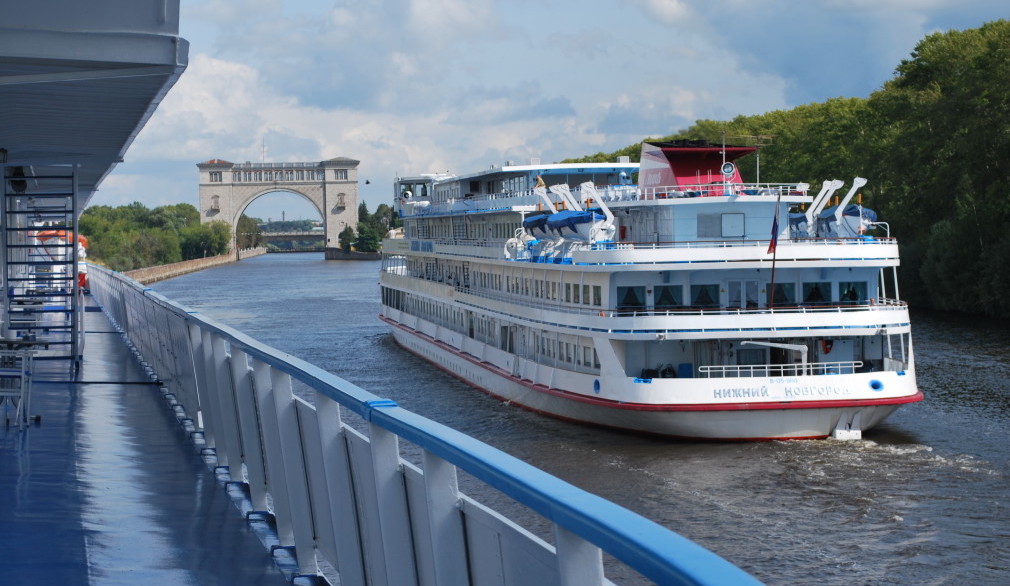
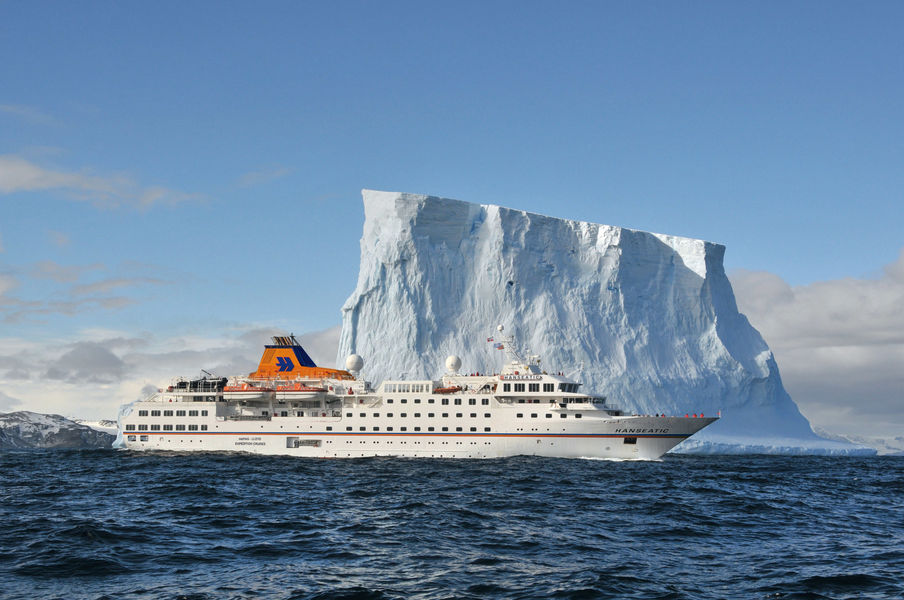
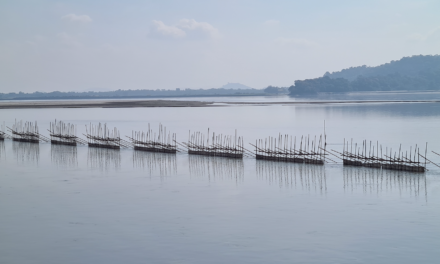
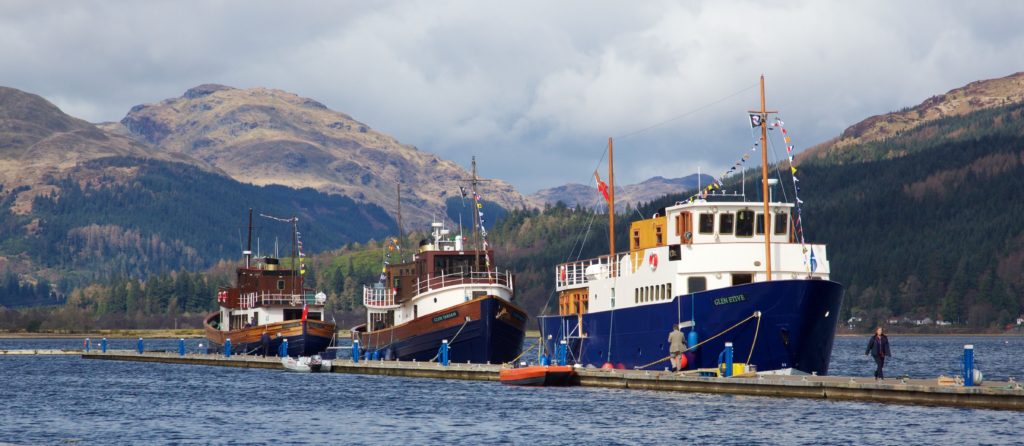
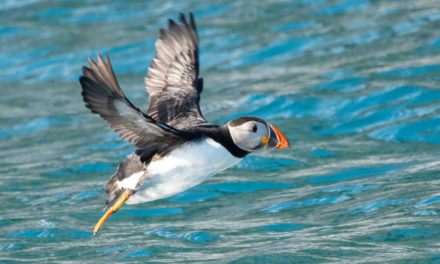
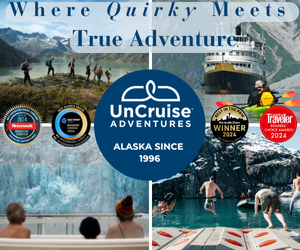
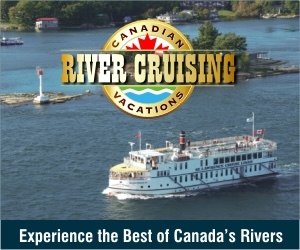

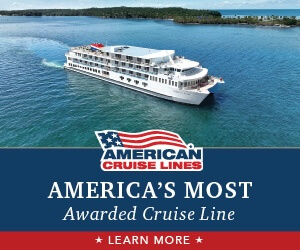




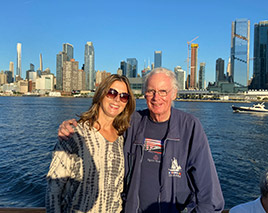 HEIDI SARNA
HEIDI SARNA
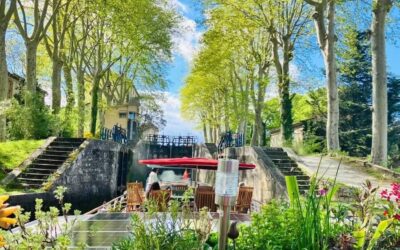


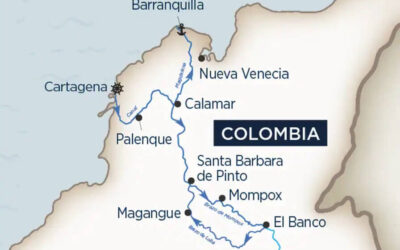
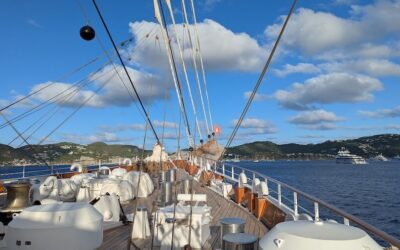
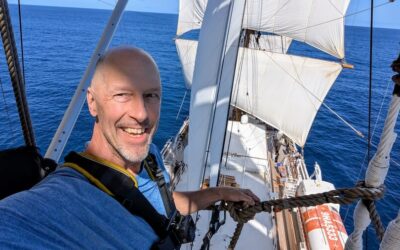
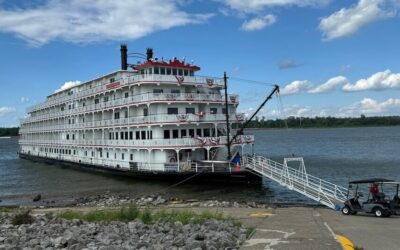
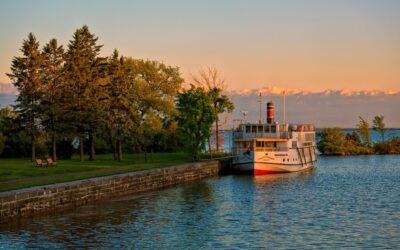

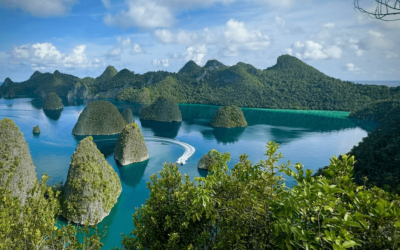
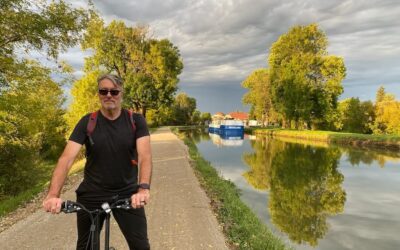

Great travel story , Ted. You had me recolecting a similiar trip that I took while working with Clipper Cruise Line some 15 years ago. Thanks for the memories.
Thanks for sharing George.